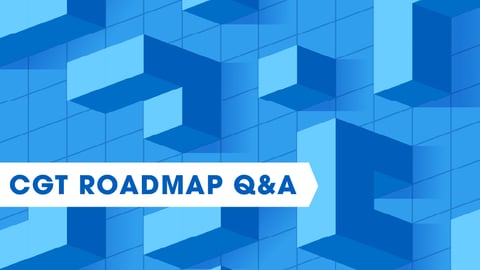Keeping It All Straight: Smart Products Require Smart Processes
Apple’s introduction of Siri in 2011 caused quite a stir. Initially, consumers interacted with the innovation in a playful way. But it didn’t take long for the virtual assistant to go from a cute novelty to an indispensable part of the daily routine. Competitors like Amazon and Google quickly upped the ante with their own products.
Moral of the story: Smart products are generational. What’s smart today won’t seem as smart tomorrow.
In the consumer goods industry, innovation has always been a cornerstone for growth and success. These days, much of the innovation involves smart products. But this category goes far beyond software-based items. It includes adding digital capabilities to a dizzying array of home and office products. Many of these products have traditionally been stand-alone items without any need for software.
Let’s use household appliances as an example. Today, these products are likely to have a variety of sensors and connections to other items. Many also come with an app that allows the consumer to control the unit. Yesterday’s simple appliance is now a very sophisticated, interconnected item. So it’s critical that both the “smart” and “product” departments are working closely together to ensure a timely and successful offering.
Considering the challenges
The software considerations alone are enough to make a product manager’s head spin.
- An app – one for Android and another for iOS
- Connections with home infrastructure provided by Apple, Google, Amazon and others
- Communications capabilities
- Quality tracking to inform the design of future items
- Maintenance – for enhancements and bug fixes
- Support
- Security
And this is just one product!
Now, let’s multiply all of this by the number of products in your portfolio, the number of vendors you source from, the number of production facilities in operation and the number of markets around the globe.
Keeping it All Straight
Manufacturing and managing intelligent products is a far more complex affair than traditional product development. It involves coordinating departments and disciplines with different priorities, methodologies, work habits and technologies. The challenge is bringing together software and physical product development processes, which have rarely interacted in the past, while preserving the best practices of both disciplines. Not an easy task.
Here are a few things to consider to increase your chances for success.
1. Mind the Gaps
Each part of the product development process, both for the physical product itself and its multiple IoT features, has its own deadlines, checkpoints and deliverables. It’s common to see gaps in alignment between business units, third parties and the executive suite.
These gaps can result in missed deadlines, launch delays and recalls. The degree of alignment in all these moving parts is often the best indicator of whether a product will be profitable or a costly dud.
2. Take a Global View
In order to meet and exceed revenue expectations and margins, consumer goods companies must have an understanding of the true costs of product development. This means tying together regions, market segments, needs and feature realization to execute efficiently on new product plans.
3. Work to Your Strengths
Using the company’s vision as the overriding objective, teams should be empowered to use different methodologies and tools. Software teams are accustomed to using an Agile approach to product development.
On the other hand, physical product teams require a more governance-based agenda. The right strategy can allow for a best-in-breed approach to smart product development instead of forcing teams to implement a one-size-fits-all approach for innovation.
4. Keep Focused On the Big Picture
Consumer goods companies need an innovation governance framework to manage the dual-track development process. This framework will allow physical product and software development teams to work side-by-side with different work styles and methodologies.
5. Think Simple Where You Can
Smart products are complex, but the processes to create them don’t need to be complicated. Use data-driven and actionable approaches that track what’s important at as high a level as possible. Don’t get lost in the details.
Your customers aren’t thinking about how complex this process is. They’re thinking about what the product does and whether it meets their needs. That means the total experience, including the app, installation/setup and your support desk. Consumer goods companies are no longer in the business of producing a simple product; like it or not, you’re now in the user experience (UX) business.
Consumers are demanding smarter, more integrated and connected products. Manufacturers must be prepared to deliver them efficiently and profitably. The right process and approach can make it easier.
Paul Heller is CTO of Sopheon.




